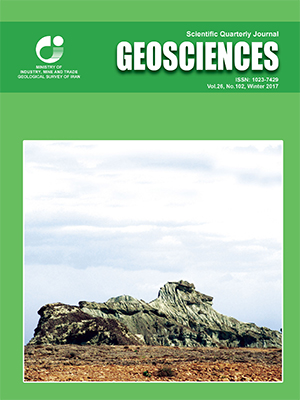Document Type : Original Research Paper
Author
Assistant Professor, Department of Mining, Birjand University of Technology, Birjand, Iran
Abstract
The sequence of seismicity including three earthquakes in the Mohammadabad region, eastern Iran, within a period of 30 years has made it one of the most outstanding seismically active regions in the country. The Mohammadabad fault system is described using earthquake and satellite imagery data to support a simple tectonic model. The interaction between the Mohammadabad strike-slip fault system and basement structures and also the en-echelon array of fault segments have resulted in formation of the Mohammadabad pull-apart basin and Tajkuh contractional zone. The Daqq-e-Mohammadabad basin is a topographic depression formed in a right-step releasing step-over related to the Mohammadabad-Taleb dextral strike-slip fault system. Geomorphologic evaluation of the Mohammadabad deformation zone at surface indicates both normal and reverse faulting. Normal faulting is obvious in the margin of the basin and reverse faulting is seen in the zone of contraction at the Taleb-Tajkuh left-step restraining step-over. The model presented for the formation of adjacent extensional and contractional structures based on traces of the Mohammadabad strike-slip fault system, basin, and uplifts to the south of the area is a double step-over (releasing and restraining) model. Fault segments associated with this step-over may be capable of earthquake ruptures. The linkage of main strike-slip zones (Mohammadabad-Taleb and Taleb-Tajkuh) by transverse faults could increase potential generation of large earthquakes and activity of sympathetic faults.
Keywords

